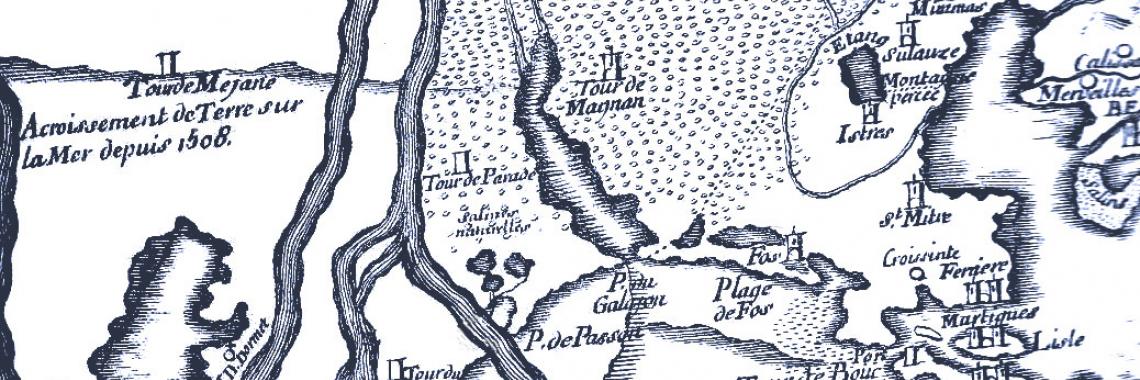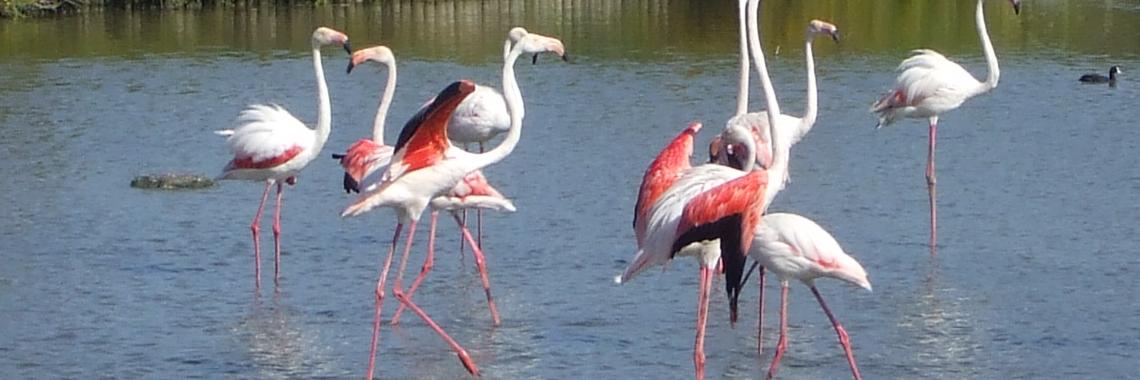Delta landscapes in France
19.12.2017, by Bénédicte Gaillard
The entries are still in process, the e-atlas is still under development
The Delta du Rhône was formed 10.000 years ago by the penetration and decline of the sea and the edification of sandy spits.
Since Antiquity the area is used agriculturally and large agricultural domains appear. The construction of dams start in the Middle Age while forestry exploitation sets back afforestation. From the 17th to the 19th Century agriculture and saline progress and the construction of dams continues. During the 20th Century the Rhône river flow is channelled and the water flows are controlled by irrigation and drainage. Rice-growing and market gardening develop during the second half of the 20th Century as well as industrialisation and urbanisation at the outskirts of the Camargue, which provokes a general diminution of the natural environments: between 1944 and 1988 the delta lost 40.000 ha of natural areas. From this moment policies of landscape and ecosystem protection are elaborated (regional park, protected areas).
The first historical mention of the Delta du Rhône dates back to Hesiode (a Greek poet from the 8th Century BC) who considered the delta, as well as the Pô delta and the Rhine delta, the gates of Hell.
There are two zones in the delta. In the North, a fluvio-lacustrine Camargue dominated by fresh water. An irrigation system bas been built there over centuries, permitting agriculture and notably rice-growing. In the South a laguno-maritime Camargue can be found designed by the sea incursions and under the influence of salt. There are the salt marshes of Salin-de-Giraud and Aigues-Mortes. Between the North and the South the Etang de Vaccarès (salt water lagoon) and its outlying marshes form a transition zone.
It was created naturally and the zone of the delta called Camargue forms a triangle of 150.000 ha whose ends are Arles, le Gros-du-roi and Fos-sur-mer.
There are three different parts:
- the Camargue comprised between the two arms (sounds) of the Rhône river that are still active, the Grand-Rhône river at the East and the Petit-Rhône river at the West
- the small Camargue at the West of the Petit-Rhône river
- the Plan du Bourg at the East of the Grand-Rhône river
It is still in use today and the territory is protected under the parc naturel regional de Camargue and the UNESCO biosphere.
It is combined with a specific architecture: the Camargue cottage, the mas (Provençal farmhouse), lookout towers along the Rhône river, lighthouses and castles.
The main products are rice and salt, besides the breeding of horses and bulls.
It is connected to specific agriculture (rice-growing, salt, bulls and horses).
It is connected to specific technical know-how of this type of landscape, land, soil.
It is connected to specific values with traditional costumes, local food specialities (rice and bull), ferias (festival with bullfighting), “courses camarguaises” and corridas.
It is very well known to the public via the Parc naturel regional de Camargue and its museum.
The Rhône river that flows in the Mediterranean Sea and splitting in two rivers, the Petit-Rhône (small Rhône river) and the Grand-Rhône (big Rhône river), near the city of Arles, forms the Delta du Rhône. The zone of the delta is called Camargue.














